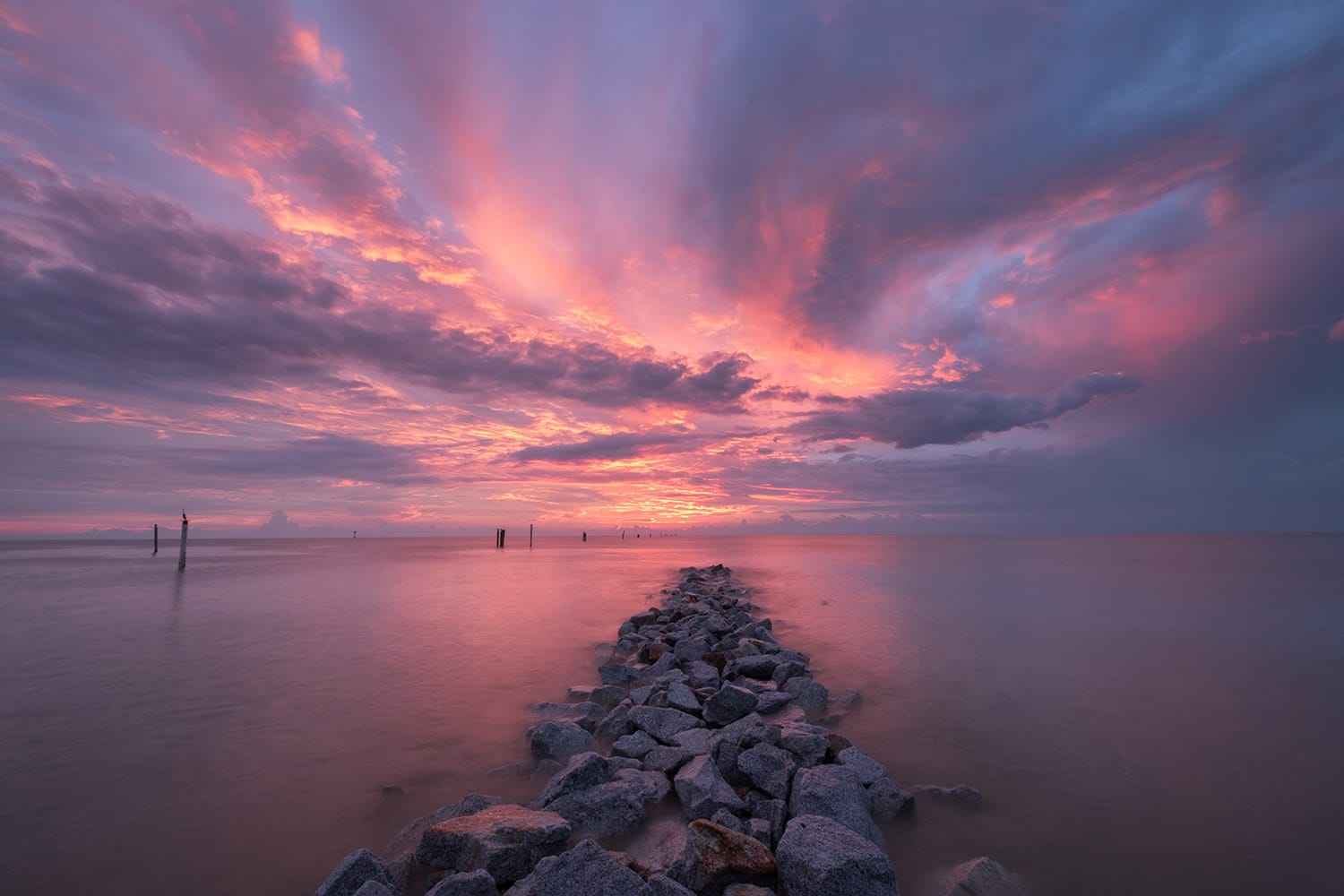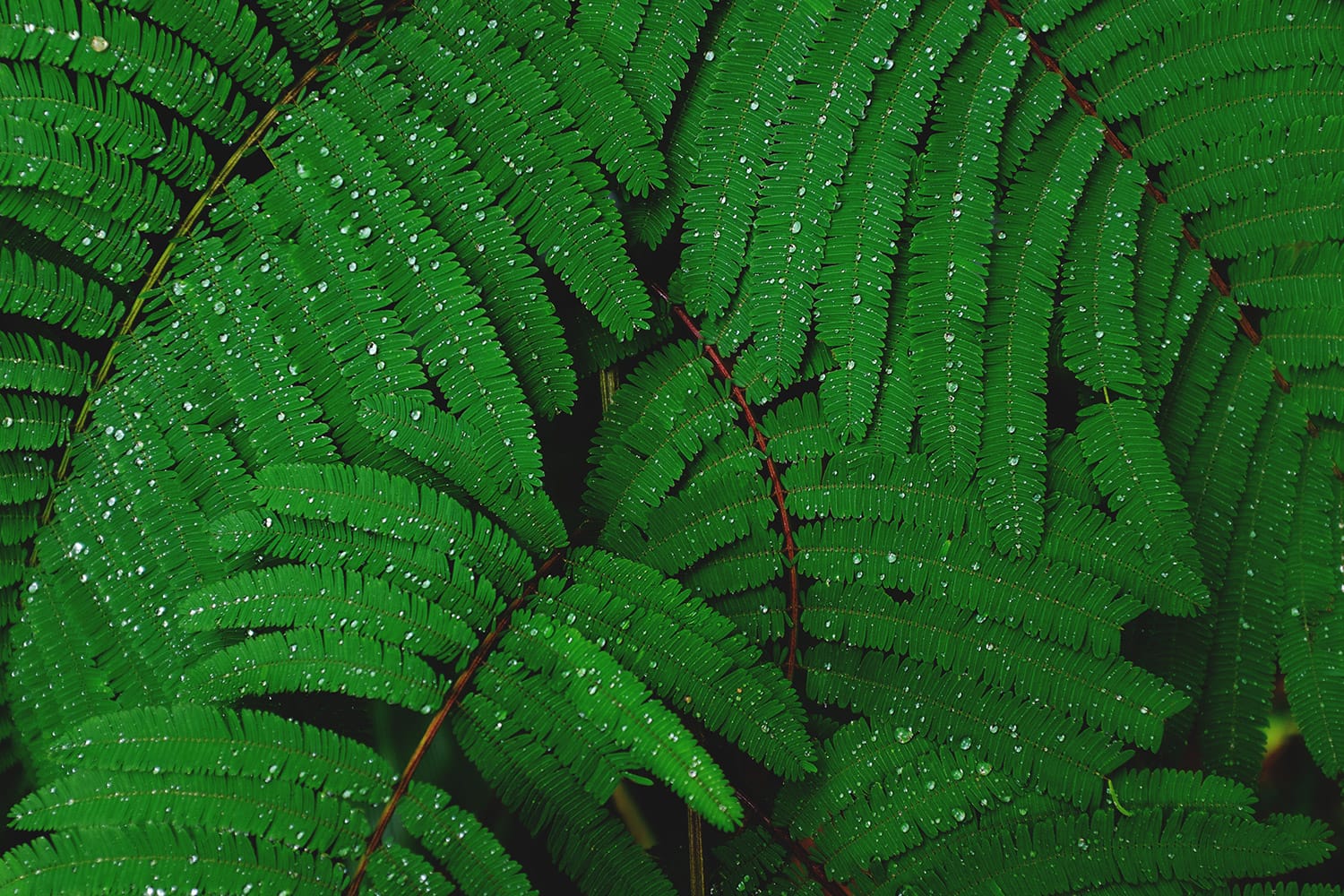11 Common Landscape Photography Mistakes
If you’re just getting started with landscape photography, or if you have some experience but you’re looking to improve your skills, there are a few common mistakes you should be aware of.
If you work to avoid these mistakes, you’ll find the quality of your landscape and nature photos will improve significantly.
1. Photographing in Poor Lighting

Light is one of the most important elements in photography, and this is especially true with landscape and nature photography. The same scene will look vastly different depending on the lighting.
If you look at the portfolios of professional landscape photographers, or if you browse through photography and travel magazines, you’ll notice that these photos feature beautiful lighting. Taking photos in poor lighting conditions will limit the results that you are able to create.
Generally, sunrise and sunset provide some of the best lighting conditions for landscape photos. The period shortly after sunrise and before sunset is known as the golden hour because of the amazing gold glow that is common at this time.
The period before sunrise and after sunset, known as the blue hour, is also one of the best times to photograph. The color in the sky will often be at its best during the blue hour.
In general, the harsh midday sun is not ideal for landscape photography. Getting the best photos will require you to get out at the right times, which can take some planning and prioritizing. When you put yourself in the right position at the right time, you’ll be able to come away with photos that get noticed.
Related: Making the Most Out of Natural Light
2. Photographing in the Wrong Weather Conditions
Like lighting, the weather is a major factor that will always influence your outdoor photography, positively or negatively. Different weather conditions can be ideal, depending on what you are trying to photograph.

For example, you may not consider an overcast day with light rain to be “good” weather, but this can be the perfect time to photograph a waterfall in the forest. Sunlight can cause unwanted shadows and glare on a waterfall, so the dreary day might actually be perfect if you are trying to photograph the right thing.
There is something to photograph in any weather condition, so the key is to choose your subjects based on the current weather, or plan your outings so that the weather is ideal for what you want to photograph.
3. Moving Too Quickly
Many people pick up an interest in landscape photography out of a love for travel. When you’re traveling and seeing new places, you may be accustomed to taking a quick snapshot and quickly moving on to the next place of interest. This can be a difficult habit to break, but if you want to get the best landscape photos, you’ll need to slow down and take your time.
Moving too quickly can damage the composition of your photos. When you slow down, you’ll be able to walk around the scene and find the most interesting angles and perspectives that lead to better composition. Slowing down can also help to ensure that you get the composition right, rather than getting home and finding out that your shot is unusable.
If you tend to move quickly, you may need to consciously force yourself to slow down. Don’t plan your outings too full and give yourself plenty of time so you don’t feel rushed.
4. Not Using a Tripod

If you haven’t been using a tripod for your landscapes, you will probably see a noticeable improvement in your work if you pick up this one habit. Using a tripod can help in several different ways:
- Forces you to slow down. Going back to the previous point, using a tripod is one of the best things you can do if you tend to move too quickly. Photographing from a tripod forces you to slow down.
- Sharper photos. The main benefit of using a tripod is the added stability, reducing movement and creating sharper photos. In landscape photography, you’ll generally want everything to be sharp and in focus, so a tripod is essential.
- Can help with composition. When you are using a tripod, you’ll be forced to adjust the tripod to get the composition that you want. You won’t be able to quickly snap a photo without giving the composition some thought. This forces you to become more particular and selective about your composition, which is a good thing.
In general, if you want to improve your own landscape photos, you should mimic the pros. Professional landscape photographers will almost always use a tripod, so that should be enough to convince you that it is worth the effort.
5. Crooked Horizon
A crooked horizon can ruin an otherwise good photo. Fortunately, this one is easy to overcome. You can use grid lines on your camera’s LCD screen or bubble levels to ensure that your photos are level. You can also fix crooked horizons very easily in Lightroom or Photoshop (although it is best to get it right in the camera). Generally, it’s better to have the appearance of a straight horizon, even if the horizon is slightly crooked in reality.
6. Forgetting To Shoot Vertical Images

Most landscapes photos are taken horizontally (that’s why it’s called landscape orientation, after all). But that doesn’t mean that all of your photos should be horizontal. Vertical landscapes can also be extremely interesting, and there is definitely a use for vertical images. Magazines are printed vertically.
Customers or clients may be looking for vertical images to use in their own printed publications or on a website. Having a nice variety will allow your photos to be more useful, will open up more opportunities, and will give you the best chance to sell or license your photos.
7. Shooting Only with a Wide Angle Lens
Another common approach to landscape photography is to use a wide angle lens. If you’re photographing a vast, epic landscape, the wide angle lens is ideal for getting as much as possible in the shot. However, it’s a mistake to assume that all of your landscapes should be captured with a wide angle lens. There is a time and place for using other lenses, even telephoto lenses. Be sure that you are mixing it up and choosing the lens that is right for each photo, not just sticking to a wide angle lens without giving it much thought.
Related: Tips for Capturing Landscapes with a Telephoto Lens
8. Lack of a Subject or Focal Point
When you’re first getting started with landscape photography, the typical approach is to find a beautiful scene, get everything in the frame, and take the photo. This approach relies on the natural beauty to create a quality photograph, but it doesn’t always work that way.
Regardless of how beautiful the scene may be, every effective image needs to have a subject or focal point. When you are composing your photos, think about what it is that you want viewers to notice or be drawn to. What is the main point of interest in the photo?
9. Busy Edges
When you are composing your shots, after you have the focal point established, also be sure to check the edges. Distracting items at the edges of your photos can take away from the overall effectiveness. You may be able to crop out some things or touch up the photo in post-processing, but checking the edges before shooting is the best approach. Are there are branches, leaves, rocks, or other objects right at the edge that are distracting from the focal point? If so, adjust your composition.
10. Relying Too Much on Post-Processing
Lightroom and Photoshop are invaluable resources for digital photographers, but you don’t want to rely too heavily on them. Try to get your shots as good as possible in the camera, so the work required in post-processing is minimal. If you rely too much on post-processing, you’ll spend way too much time in Lightroom and Photoshop.
Plus, all the editing in the world cannot beat better use of your camera. Use post-processing as a way to put the finishing touches on your photos, but don’t rely on it to your photos from poor to good.
11. Forgetting to Look for Intimate Details

Most landscapes showcase the big scene, and for good reason. But there is also a place for showcasing intimate scenes or fine details. Some of the most interesting photos show closeup scenes of rushing water, patterns that appear naturally in plants, and other smaller details that can get overlooked in the big scene.
These types of details are everywhere in nature. It’s important to make the effort to find these types of details and not to overlook them because of a fundamental priority of the bigger scene.
If you are able to eliminate and overcome these common mistakes, you’ll find that your landscapes quickly improve. Take these items into consideration whenever you’re photographing if you want to get the best results possible.
